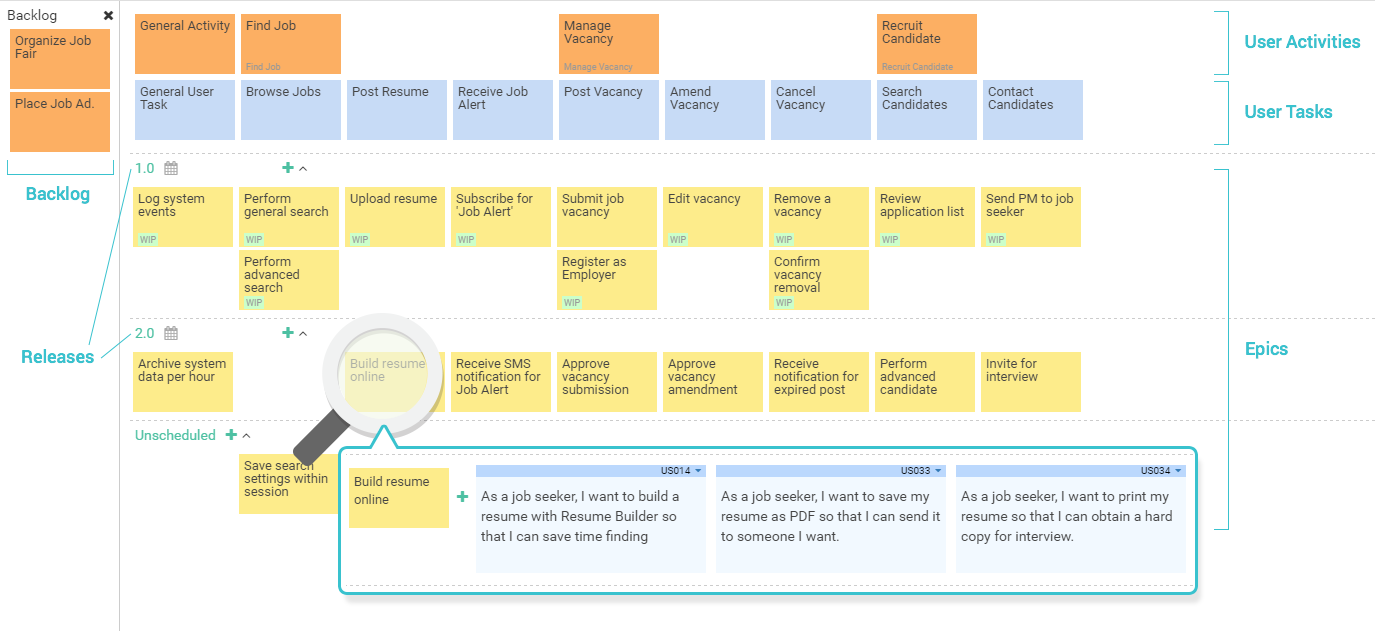Structure Your Product Backlog into User Story Map
Requirements always change as teams and customers learn more about the system as the project progresses. It’s not exactly realistic to expect project teams to work off a static requirements list and then deliver functional software months later. There has to be a better way—a more Agile way to address end-user requirements!
Story Mapping
User story mapping is becoming a popular technique through the efforts of Jeff Patton. The main idea behind Story Maps is that single-list product backlogs are a terrible way to organize and prioritize the work that needs to be done. A richer structure is necessary for allowing the teams plan a software release using user activities, user tasks, epics* and user stories to represent customer requirements. A story map puts all these requirements in order horizontally in terms of time and represents the solution vertically in terms of priority.
* Visual Paradigm enhanced feature
Benefit of Story Map
By visualizing your user’s activities on a story map you’ll be able to:
- Split user activities into manageable structure for overview the big picture of your backlog
- Defer the less important and focus on what’s really important by grooming and prioritizing of your backlog for iterative agile approach
- Create user stories through brainstorming and collaborative approach, so that deliver early and more often
- Visualize project progress
Advantages of Story Mapping Tool Support
- Never run out of space on your whiteboard,
- Easy to organize, update and modified information in the stickers
- Easy to organize stickers for prioritization of stickers by dragging and dropping stickers around in the map
- Good for remote team collaboration for real-time collocation updating of maps
Building a Story Map
Story map is a 4-level hierarchical structure for requirements gathering. Story map starts from a collection of user features received from different sources (i.e. backlog), and these user features will be achieved as an activity by performing some tasks. And these tasks can be transformed into epics and then user stories for software development.
Story Map Structure: User Feature for achieving a Goal (Backlog) > Activities > Tasks > Epics > Stories

*Illustration using Visual Paradigm v. 14.1